Bamboo products in the modern workplace
The old way of thinking about design as a system of function over form has almost disappeared over the past 20 years or so, as people realize they can achieve both ends at the same time. Customer-focused businesses have led the way in changing public spaces for the better, but even in traditional office spaces, employers are finding they can no longer get by with ordinary decor and furnishings in their efforts to create a comfortable and appealing work environment.
Modern design in the workplace
With the rise of modern design, workers are no longer satisfied spending 50 or more hours of their week sitting in staid, ugly, poorly lit offices. As their employers have become increasingly aware of those changing attitudes, they have turned to new and unique concepts to make their offices into welcoming, collaborative environments.
Newer, creative architectural techniques have led to things like open floor plans, cozier work spaces, more efficient and effective lighting and stylistic enhancements that have turned offices into places where people actually enjoy spending their time, as opposed to feeling like they're trapped in a galley.
Among the many concepts, materials and design elements that have been making their way into the modern office are bamboo-derived products for floors, walls and furniture. Bamboo is even used as an alternative to plywood in products like Plyboo, from the Smith & Fong company.
More environmentally sustainable than traditional wood, while still providing the same, or even enhanced, aesthetic appeal, bamboo products can be part of any office construction or design. Not only are they more pliable and able to stand up to the kind of heavy use experienced in most offices, the environmental advantages they provide can be a big part of making commercial buildings more sustainable - a major concern in today's more ecologically aware society.
Environmental benefits of using bamboo
Bamboo is grown with no added fertilizers, pesticides or irrigation, leading to significantly reduced, or even the elimination of, run-off toxic pollution in the local environment. Bamboo forests can sequester up to 70 percent more carbon than hardwood forests on an annual basis, limit land erosion and, since it regrows naturally every five years, there is no concern about deforestation.
Smith & Fong has taken the sustainability of bamboo even further by developing a formaldehyde-free glue for its products, making it the first adapter in the bamboo or palm industry to do so.
With their beauty, durability and eco-friendly attributes, products like bamboo flooring and paneling are becoming a bigger part of the interior design revolution, and can provide a major enhancement to any office space.







